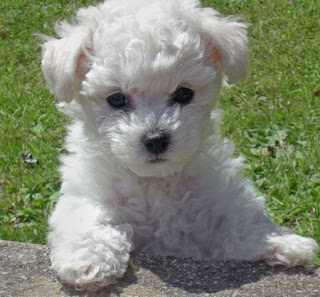What is Ringworm?
Ringworm has nothing to do with worms, which is a skin disease caused by a fungus. The name comes from the fact that this disease can cause the ring-shaped skin irritation. Several different fungi can cause ringworm. When a dog is infected, about 70% of them were infected by Microsporum Canis, 20% by Microsporum gypseum and Trichophyton mentagrophytes 10% by. In dogs, two of the most common symptoms of Ringworm is a scaly skin and hair loss.
Ringworm diagnosis
Veterinarians often use light referred to diagnose dermatofitosis Wood, but not 100% accurate. For a definite diagnosis of ringworm, DTM culture should be performed. Vets can comb dog mantle with a new toothbrush and using samples to create a culture.
Ringworm symptoms in dogs
Ringworm of the most common symptoms in dogs are scaly patches of damaged hair, and sometimes the patch will be hairy. Dogs can also get folliculitis and furunkulosis with pustula and papula, either regionally or over large parts of the body. A specific form of dermatofitosis in dogs is Kerion reaction, focal nodular form dermatofitosis. When adult dogs infected with mange, ringworm is rarely develop into common – they are usually strong enough to block the infection of one or several parts of the body. Adult dogs with weak immune systems can develop ringworm but general.
Ringworm treatment for dogs
When ringworm affects dogs and healthy adults, the disease is often restrict themselves. But most owners choose to bring their dogs to the vet for treatment can make the disease disappear faster. Appropriate treatment is also a good way to prevent the spread of the fungus, because this disease is quite contagious. Many animals, including cats, can get ringworm, and can also spread to humans.
It is possible to use the whole body topical therapy for dogs infected with ringworm, but the use of this controversial and many vets avoid unless really severe infection and spread. Whole-body treatments often come in the form of topical shampoo or rinse. One of the most commonly used rinse is Enilconazole.
For ringworm consists of local lesions, dogs can be cured with Klotrimazol lubricated or miconazole on the affected area. If the situation worse, or if long hair make confidential topical treatment (more common in dogs than cats), systemic treatment may be required. Two drugs effective against ringworm in dogs and Itrakonazol Terbinafine. Terbinafine normal dose for dogs is 30 mg per kilogram of body weight once a day, while you only need to use 5-10 mg / kg Itrakonazol one day.
Dogs for example can be given of Griseofulvin microsized formulation, the standard dose is 25 to 100 mg / kg, given once a day or in divided doses several. It should be noted that this dose is higher than the dose approved by the American Food and Drug Administration. When the dog is given Griseofulvin, stomach problems are common side effects.
Over the past few years, Lufenuron has been tested as a cure for ringworm in dogs may be, but the results have not been confirmed by controlled studies and therefore could not be approved. Hopefully, it will turn out to be a good remedy for ringworm in dogs that we can benefit from in the future.
Regardless of whether your dog is receiving systemic or topical treatment for ringworm, it is important to not stop treating it just because symptoms disappeared. Ringworm should always be treated as clinical cure 2-4 last week, or until your vet has your dog combed and determined that the disease was fully recovered. In some cases, you should treat your dog for a few months because it takes time before the symptoms start to go away.
Ringworm vaccination for dogs
Currently there are no vaccines available for dogs mange, ringworm vaccine comprising but the cells lost mushroom has been approved for use on cats. These vaccines can hasten clinical resolution of Microsporum Canis in cats. The vaccine can also reduce the severity of ringworm infections in cats, but unfortunately not the frequency.


没有评论:
发表评论